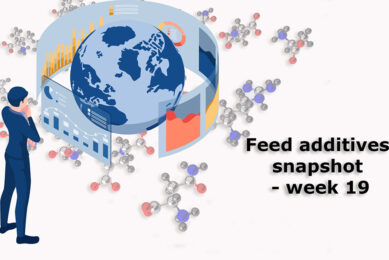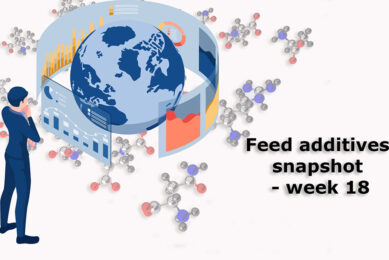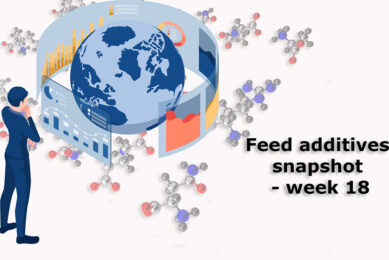Higher prices pose new challenges for cattle
When it comes to feeding cattle, you can forget much of what you have known for the last few years. The run up in feed prices since last fall changes everything.
That’s the message cattle feedlot operators got this week at a series of
meetings across the Midwest. In a tour stop at Carroll, Iowa, USA they were told
that higher feed costs may give a competitive advantage to Midwest feedlots,
will reduce the time cattle spend in feedlots, and may widen the price spread
between cattle that reach the Choice grade, and those that don’t. It may even
impact your choice of feeding steers or heifers.
Where’s the cheapest
place to feed cattle?
The Midwest usually has an advantage with the
cheapest corn prices in the country. That’s still true, and the advantage may be
greater in this new price plateau. Justin Sindt, a consultant for VetLife,
shared information from his company’s Benchmark database, which combines
production records from 280 feed yards.
In December of 2006, the average
feedlot ration cost was about $190 a ton for the complete feed in the central
Plains states (Kansas south through the Texas panhandle). The average cost in
the Midwest (Iowa and surrounding states) was $150 a ton, or 21% lower than the
Plains. In the northern Plains (Nebraska and the Dakotas) it was $163.
Cost
of gain was also cheapest in the Midwest in December, at $53 per hundredweight
of gain, compared to $62 in Plains area feed yards. The reason is simple: the
run up in corn prices is felt more acutely the farther you get from the central
Corn Belt. With cash corn now over $3.50 a bushel in Iowa and Nebraska, it is
close to $5 in Texas.
Improving feed conversion
Sindt also
pointed out to producers that with high feed costs, it becomes more important
that they concentrate on improving feed conversion of feedlot cattle. His
numbers show that when the cost of a complete feedlot ration is under $165 a
ton, feed conversion accounts for about 66% of the variation in the total cost
of gain on the cattle. But when feed goes over $165 a ton, the cost of the feed
overwhelms the impact of the other yardage costs. At that price level, feed
conversion accounts for 88% of the variation in total cost of
gain.
Grass or feed yard?
Which is better; put the cattle on
grass, or in the feed yard? For the past several years with relatively cheap
corn, this was a no brainer: Put the cattle in the yard, and pour the grain to
them. The longer they were on feed, the more money they made. An increase in the
number of light calves going straight to the feed yard, and steadily increasing
slaughter weights have resulted from cheap corn for the past several
years.
That’s all changing as we speak, said Duane Lenz, a Cattle-Fax market
analyst. “I know some Texas yards that have shown $50-$150 per head losses on
cattle that have finished out in the last 30 days,” he said.
One thing he
predicts will happen is the cattle will spend more time on grass, provided it’s
available. The cost of gain on good grass is about $35-$40 per hundred now. With
cheap corn, feedlot gains could come close to that, but not today. Now, feedlot
cost of gain is $85 or $90 per hundred in Texas yards, Lenz said.
“With that
situation, you’re going to leave the calves on grass as long as possible before
they go into the yard.” He thinks cattle might stay on pasture an extra 30-60
days this year, and those days will come off of the feedlot cycle.
The
problem then could be getting the cattle to develop enough marbling to grade
choice and get top prices. If there are more short-fed cattle as we go through
this year of high feed prices, the spread between select and choice cattle could
widen. You’ll get more of a premium on the cattle that reach choice and prime,
and more severe discounts on those that don’t.
Steers, or heifers?
This long-standing debate involves sex which is more profitable to feed.
Actually, they can both make money, if you buy them right. That’s what Jeff
Pastoor, a senior cattle consultant for Land O’Lakes Feed, told the producers.
Heifers will often sell for $5 to $10 a hundred less than their herd mate
steers, but Pastoor wonders if that’s enough of a discount. He shared feedlot
closeout data from yards that participate in the Land O’Lakes feed
programe.
On average, he said, heifers will gain 0.2 to 0.3 pounds per day
less than steers in the feed yard. And, they’ll require 0.2 to 0.5 pounds more
feed to put on a pound of gain. They will average 100 less pounds at sale
weight. The effects of those things is more dramatic as feed prices increase to
$4 a bushel.
“With 5-weight (500+ pounds) cattle, the heifers are worth $17 a
hundred less than the steers,” he says. “You can feed heifers, but just pay
accordingly.”
The series of meetings was sponsored by Land O’Lakes
Feed, Diamond V, and Quality Liquid Feed.
Related links:
Land O’Lakes Feed
Diamond V
Quality Liquid Feed
To
subscribe to the free AllAboutFeed newsletter click here.










